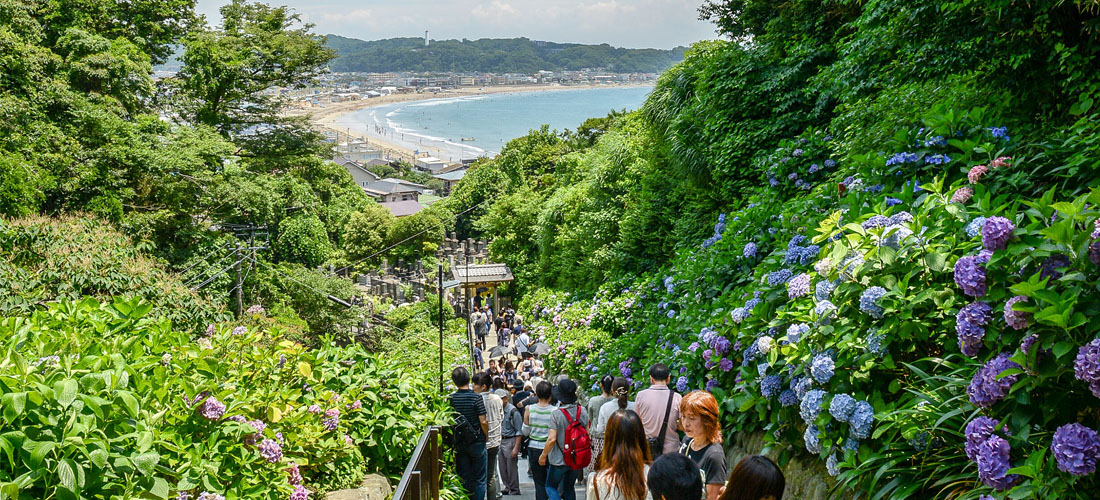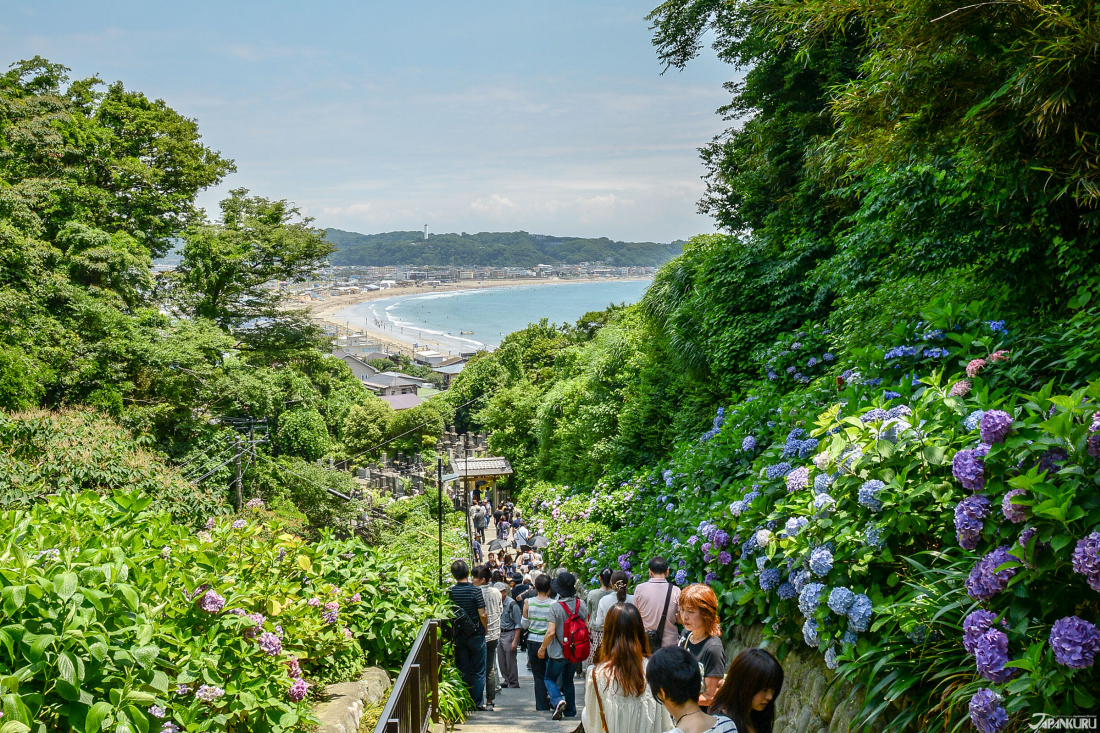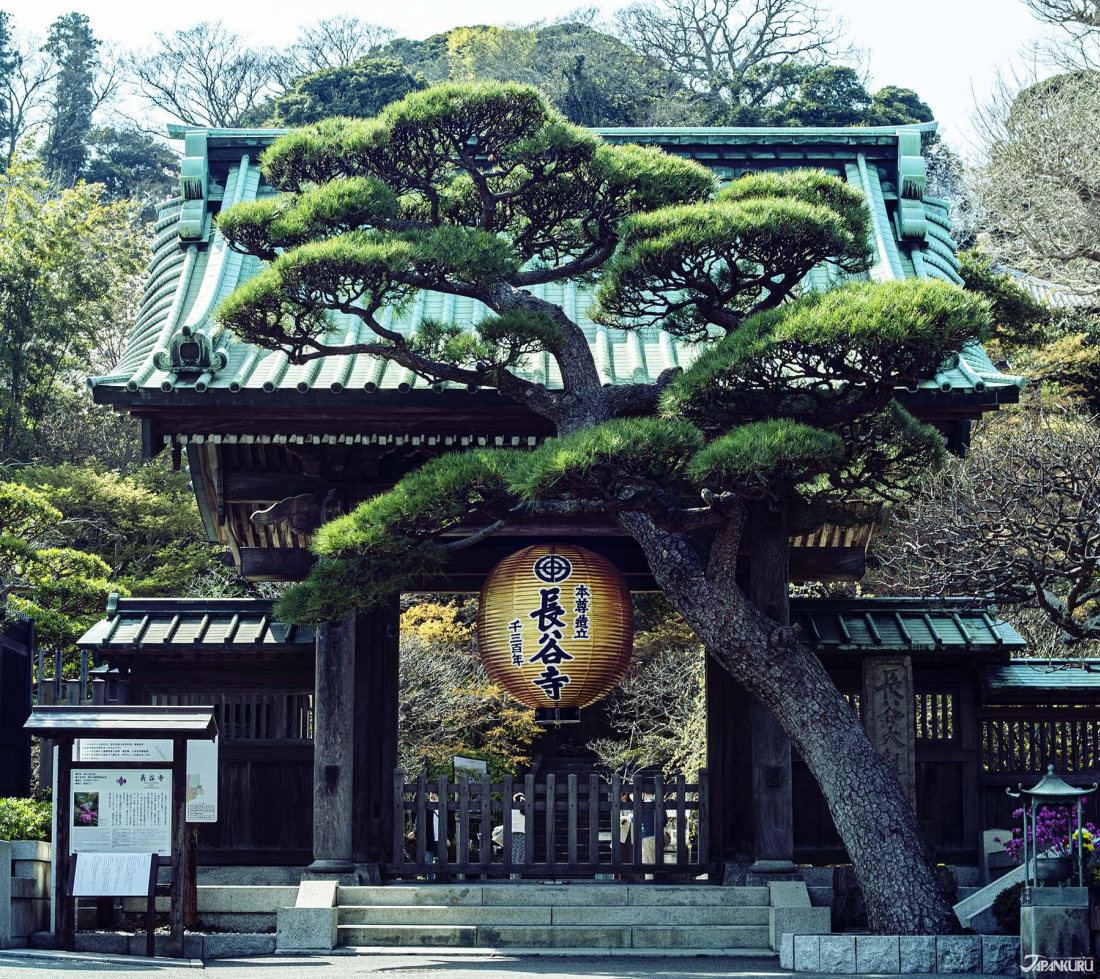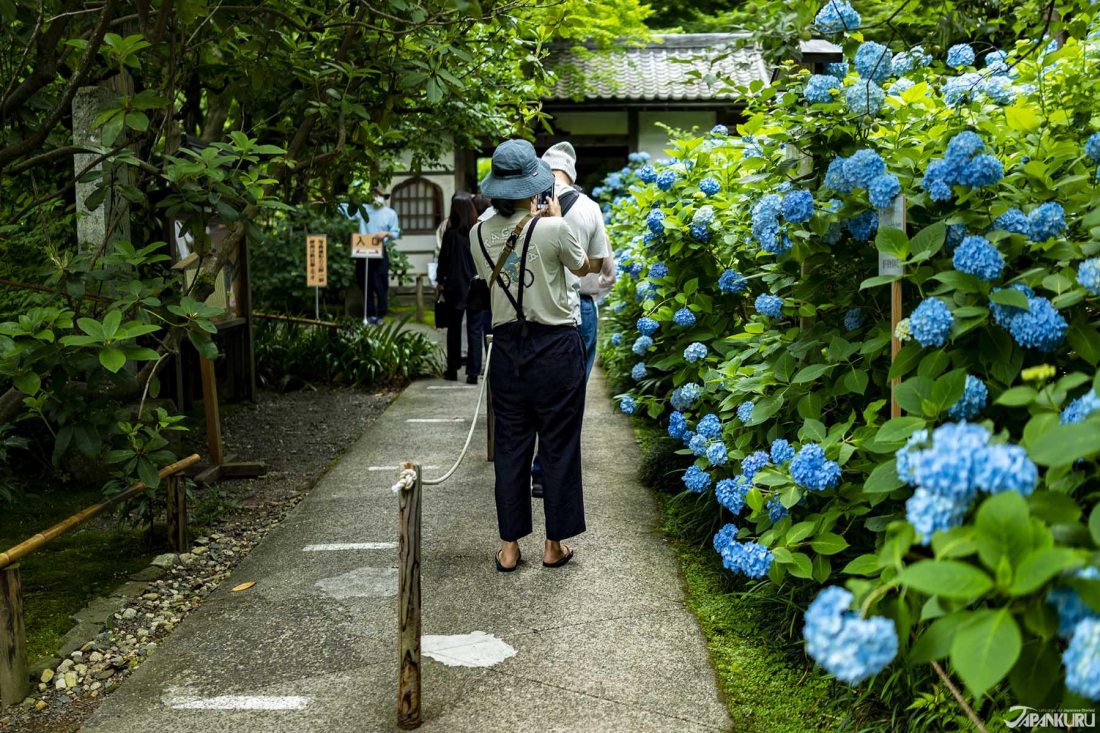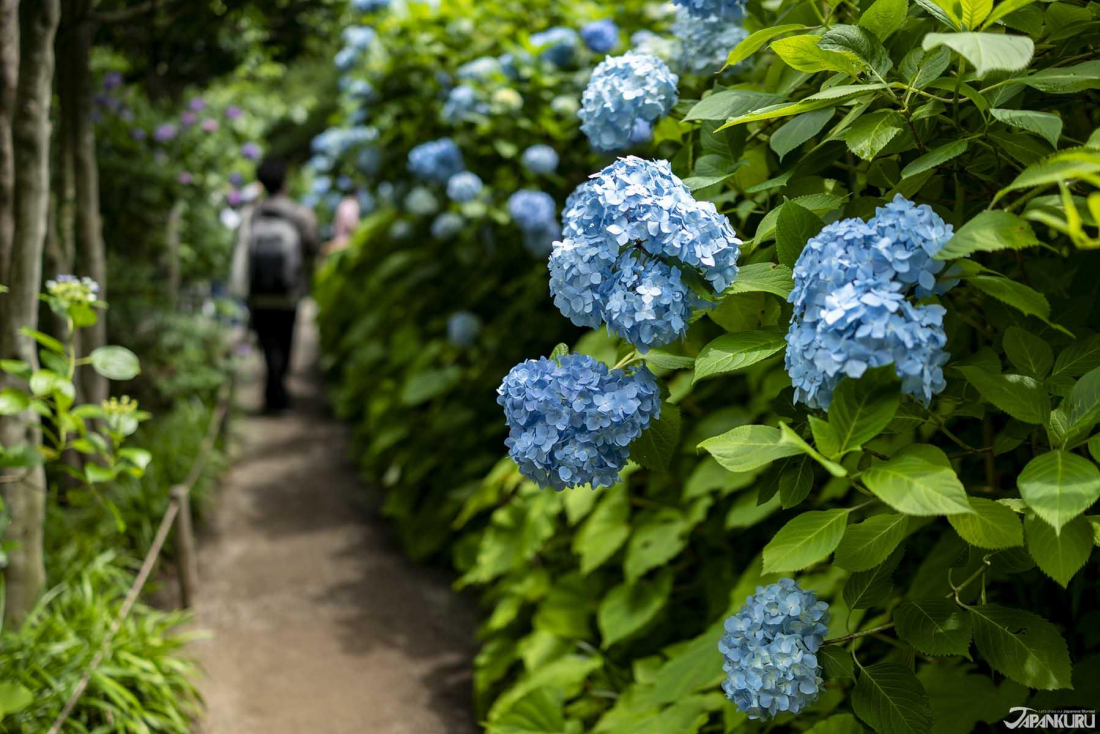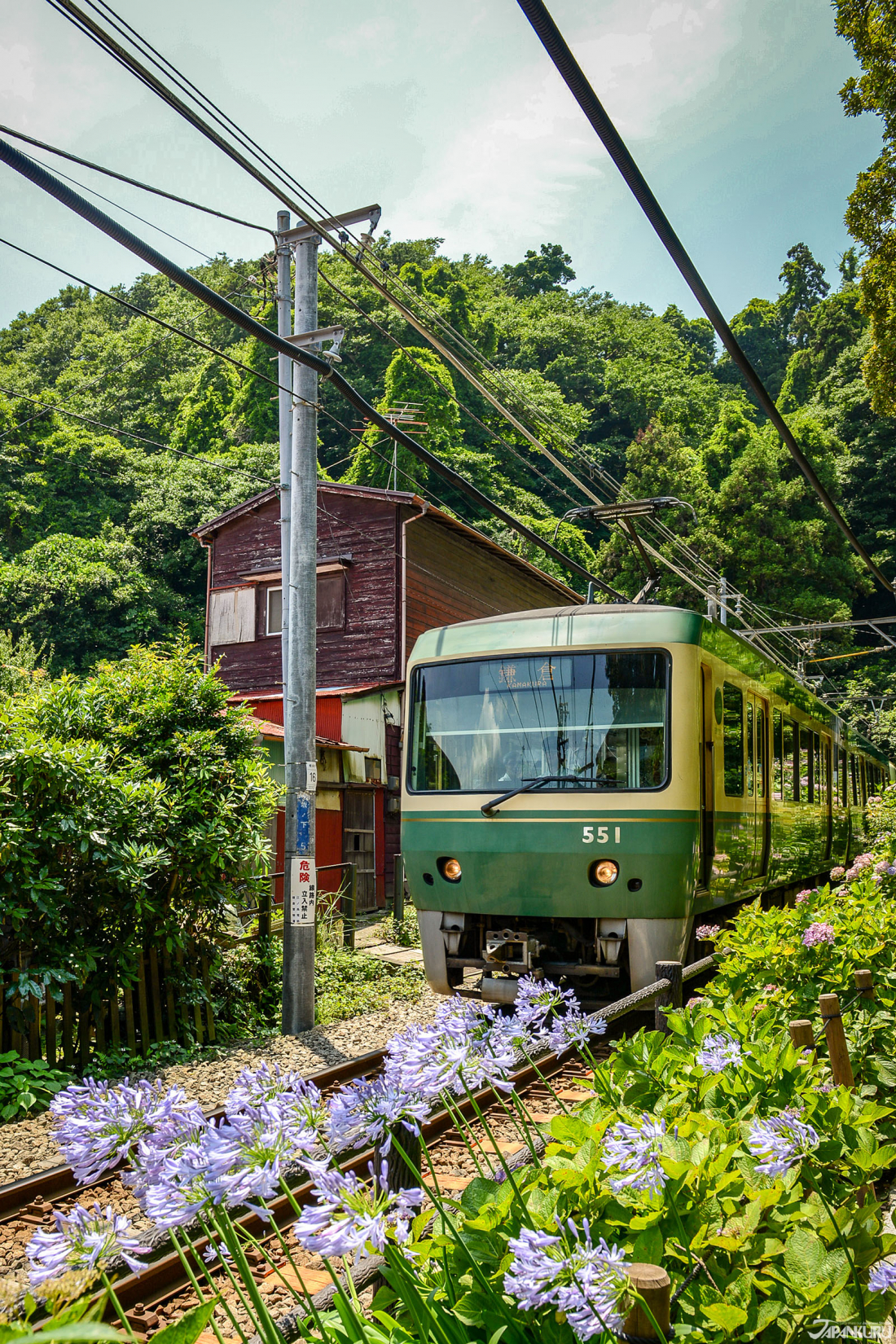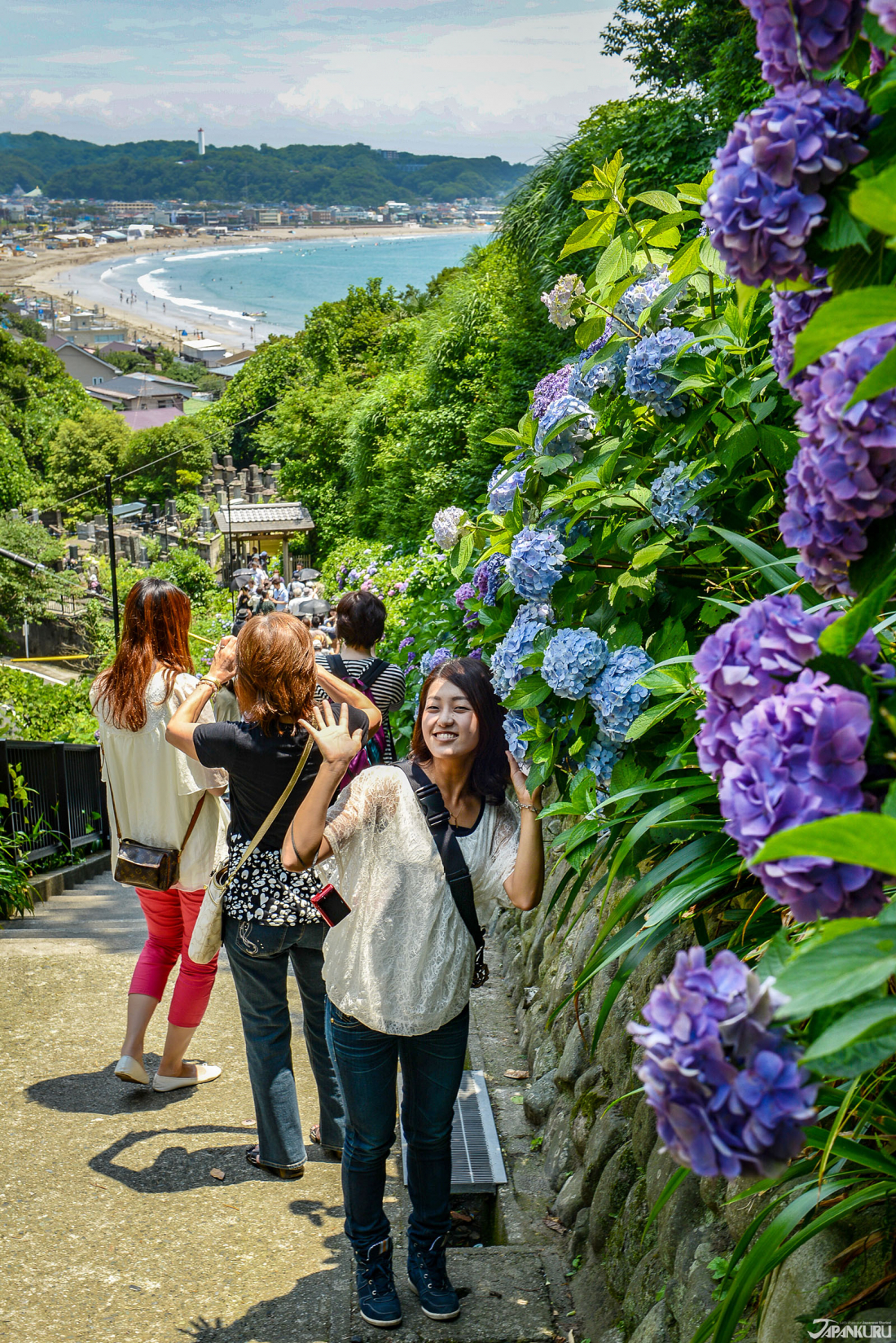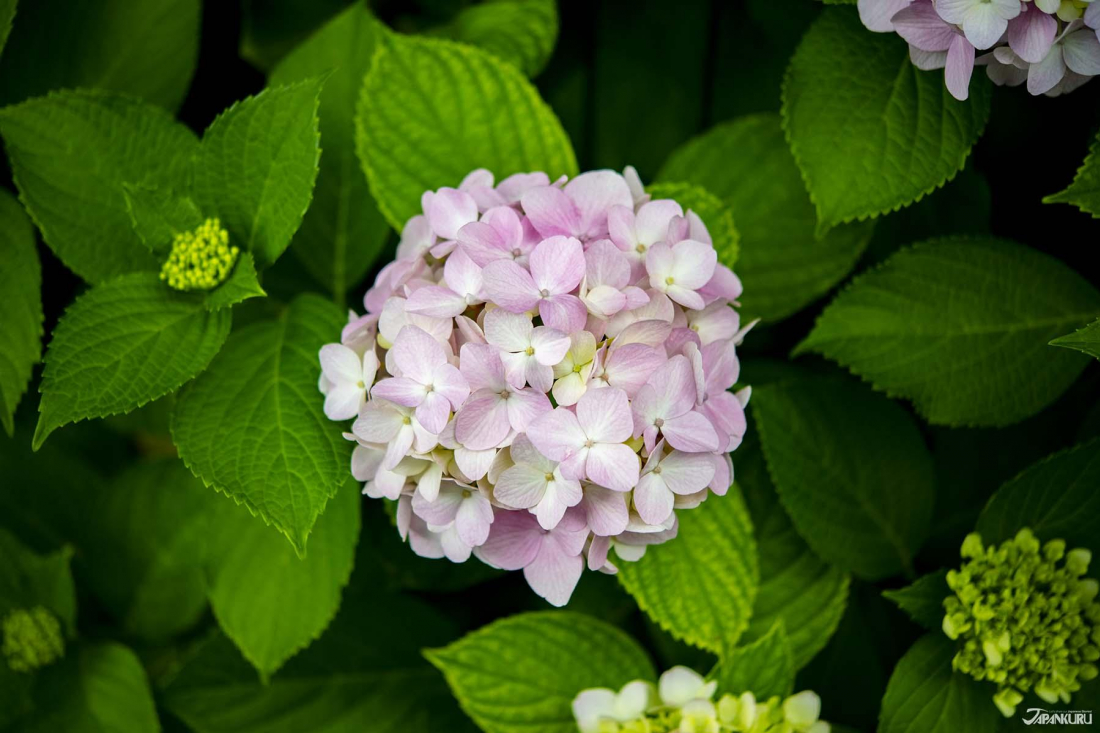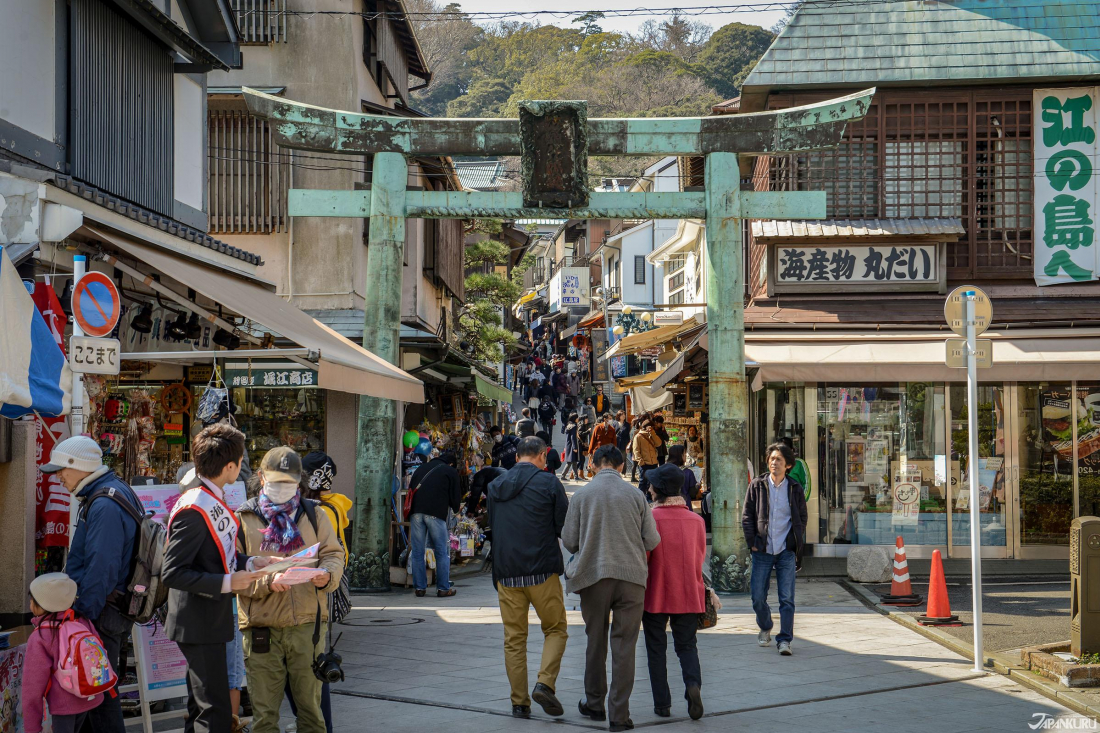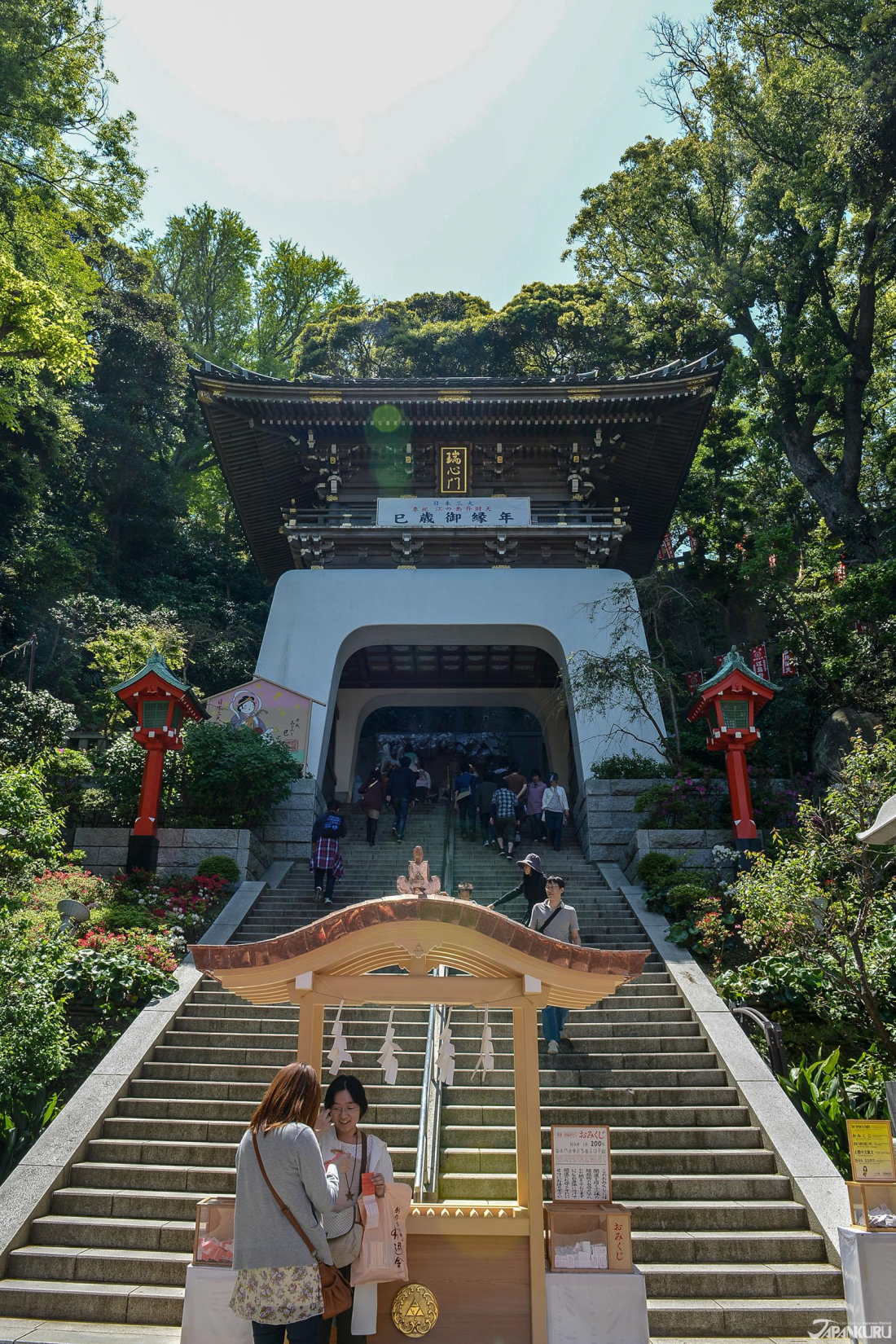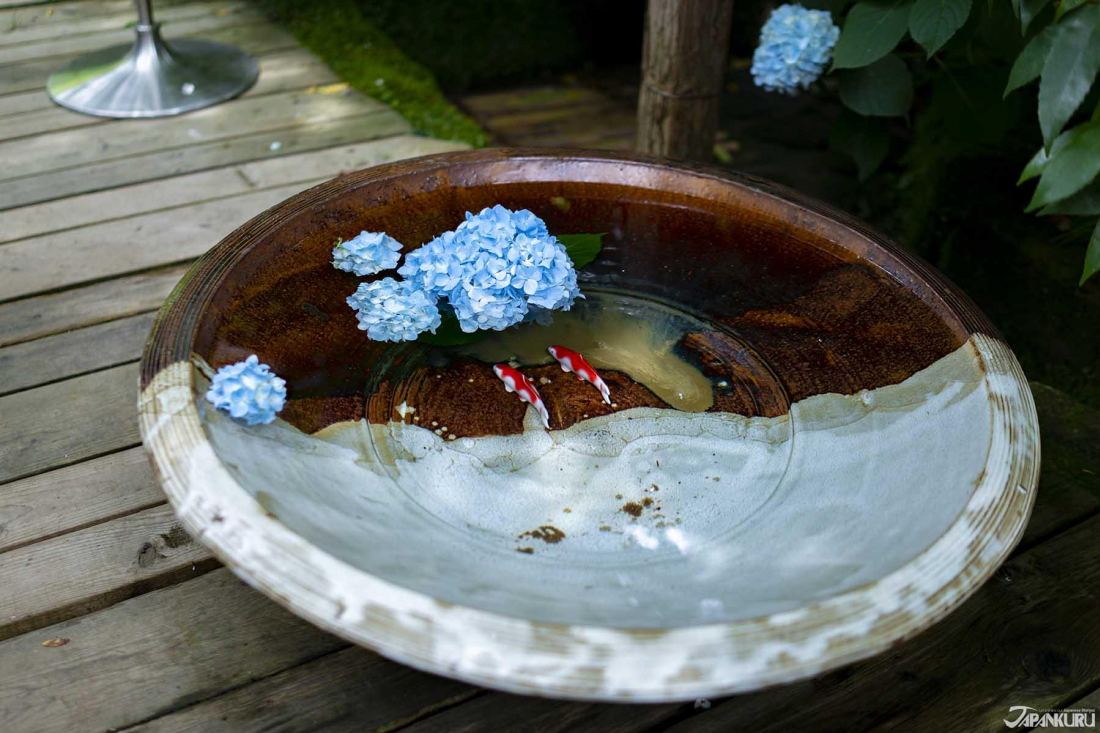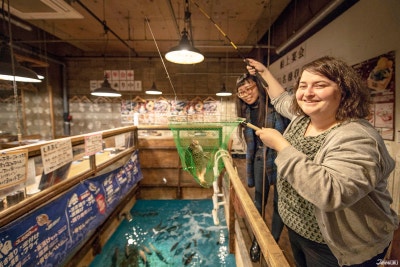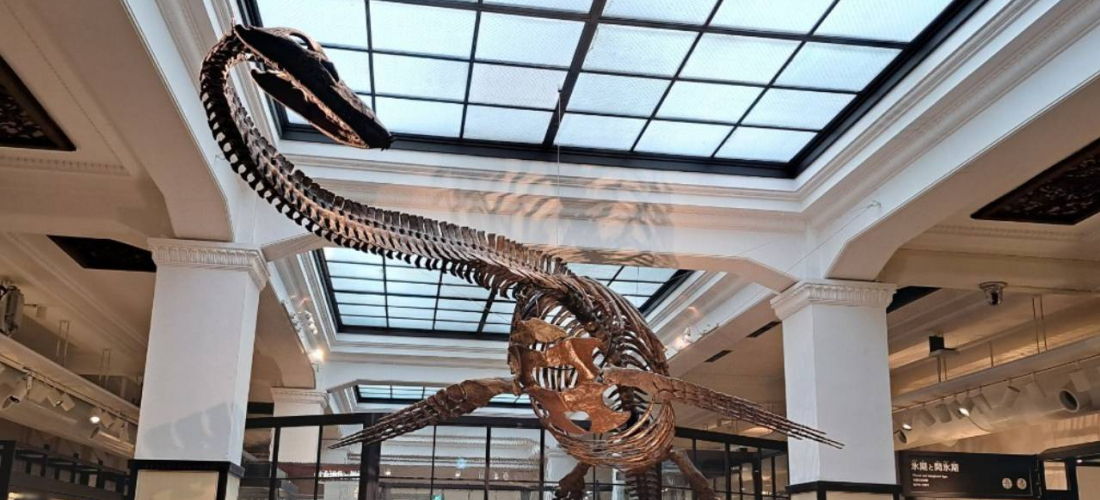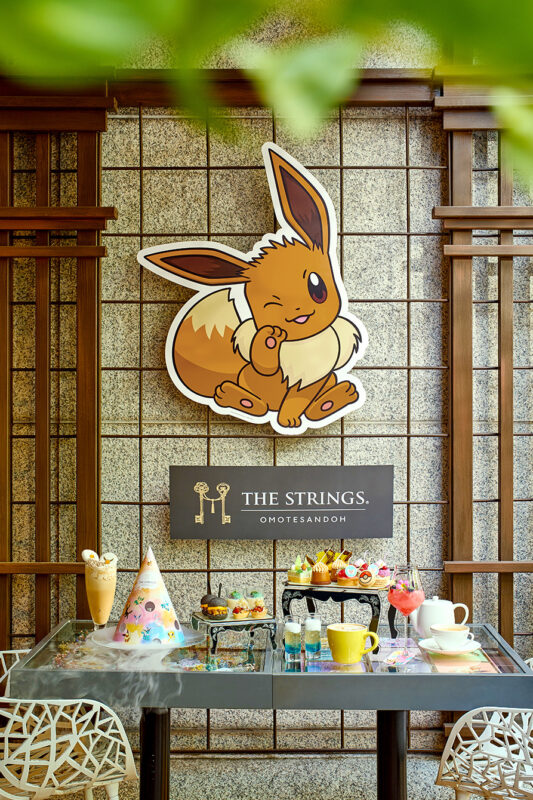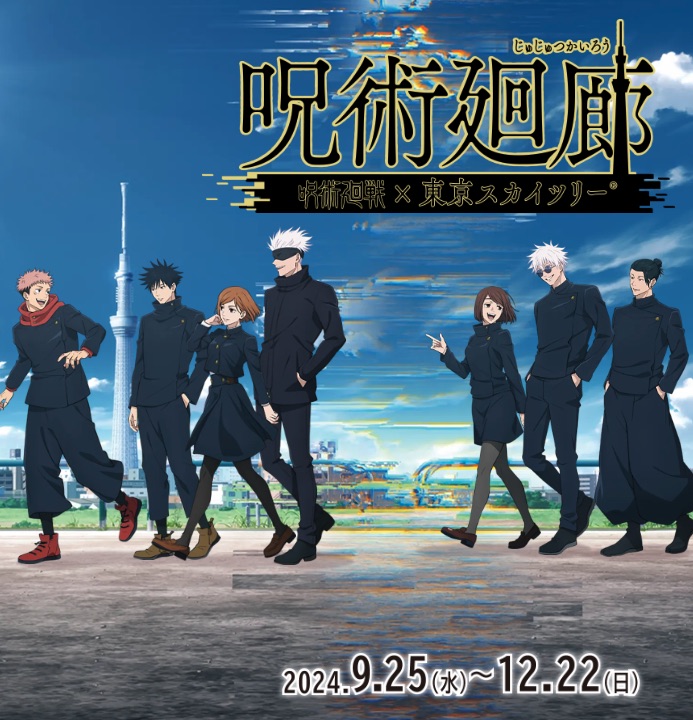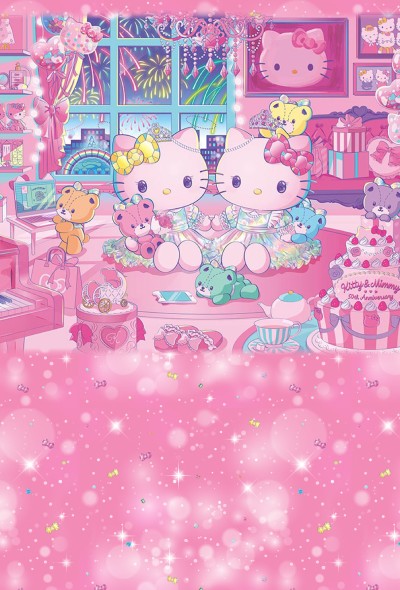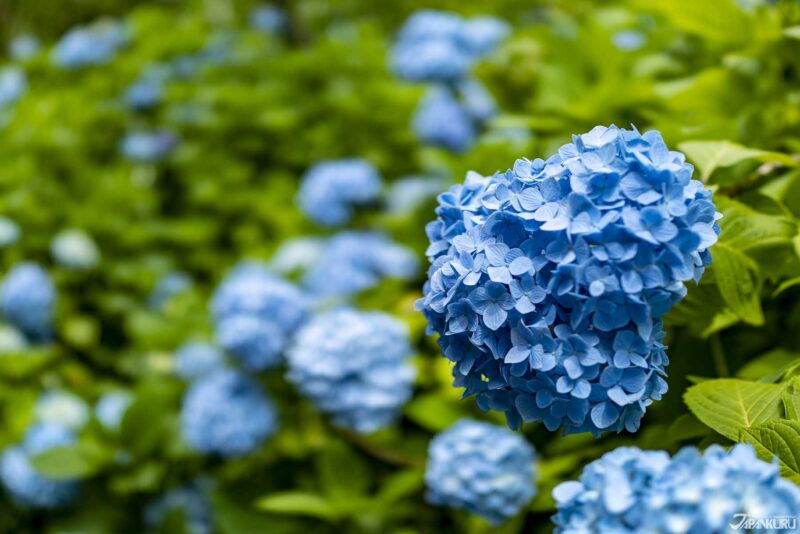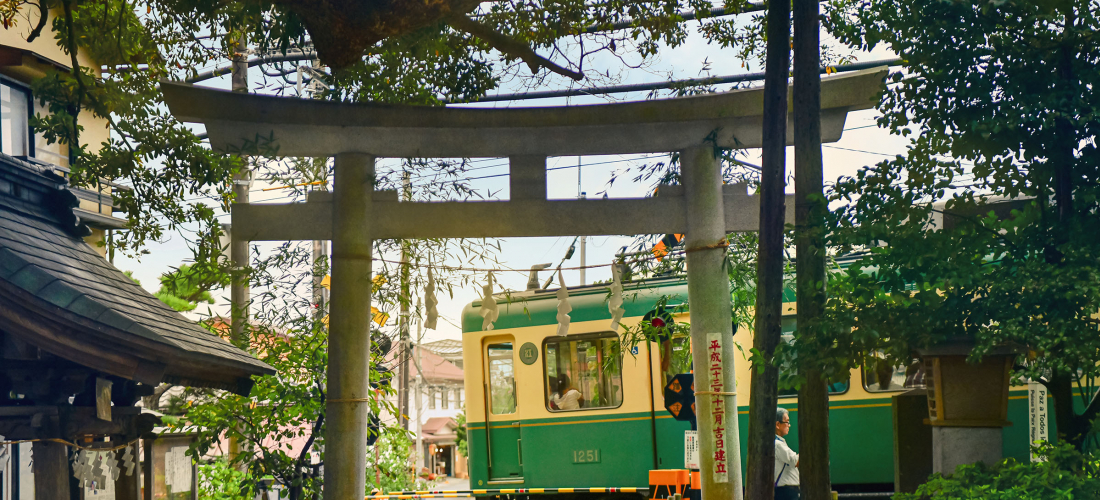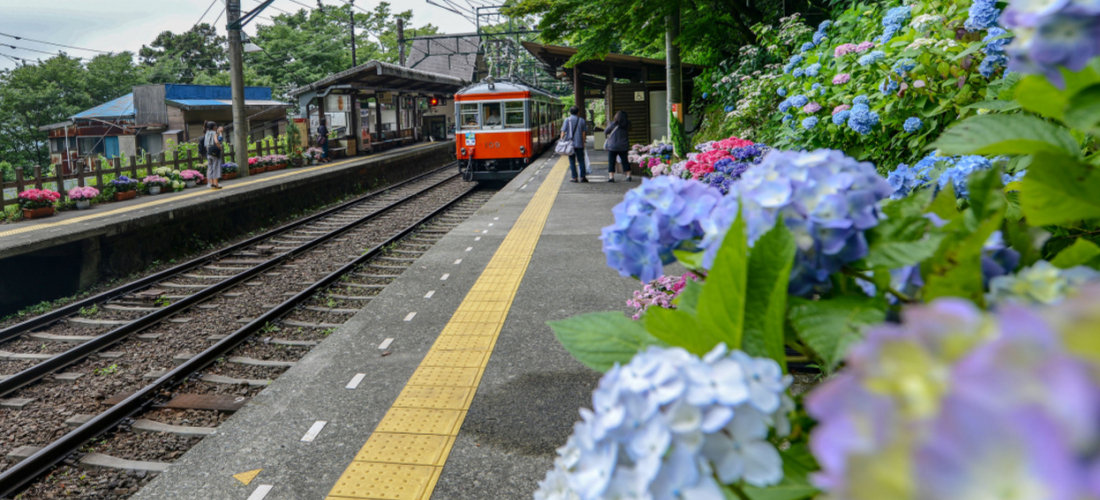CONTENTS
Japan’s most beautiful hydrangeas can be found in the many temples and shrines of Kamakura and Enoshima Island.
As summer draws near, you can feel the plants reaching towards the sun and putting out new leaves and blossoms. For lots of humans, the heat isn’t always welcome, but you can tell the plants are ready for the warmth and sunlight! So we might as well appreciate all the hard work they’re putting in.
In Japan, early summer means appreciating hydrangeas! The country is far more famous for its ubiquitous cherry blossom gardens, which blossom in spring and can be found drawing huge crowds all over the islands. But their flower admiration doesn’t end with those dainty pink petals; Japan’s beautiful hydrangea bushes also attract lots of attention, and one of the best spots for hydrangeas is Kamakura! We’ve mentioned before that you can charter a travel taxi to get you to the best flower viewing spots all over Kamakura and Enoshima Island, but no matter how you get there, it’s worth a trip!
① Hasedera Temple
3-11-2 Hase, Kamakura, Kanagawa
Hours: 8:00-17:00
Admission Fee: adults 400 yen / children 200 yen
Official Website (en)
② Meigetsuin Temple
③ Jojuin Temple
1-1-5 Gokurakuji, Kamakura, Kanagawa
Hours: 8:00 – 17:00
Official Website (jp)
④ Engakuji Temple
The places we’ve mentioned so far are all great for seeing spectacular floral displays, and are certainly worth a trip for anyone willing to put up with the crowds of people. If you’re not sure you want to deal with that level of crowding, though, you might be interested to hear about Engakuji Temple! This temple has beautiful hydrangeas, lovely old temple buildings and courtyards, and (importantly) plenty of space to move around in.
409 Yamanouchi, Kamakura, Kanagawa
Hours: 8:30 – 16:30
Admission Fee: adults 300 yen / children 100 yen
Official Website
⑤ Enoshima Shrine
2-3-8 Enoshima, Fujisawa, Kanagawa
Hours: 8:30 – 17:00
Official Website (jp)
Kamakura is known for being such a scenic area that it’s constantly used a backdrop for momentous scenes in Japanese dramas, or as a setting for movies. It’s worth visiting year-round, but if you appreciate the beauty of bushes full of blooming flowers, then early summer is the time to go!
If you can’t resist the pull of all kinds of flower-viewing in Japan, or you happen to be here in another season, you can always go see cherry blossoms or curtains of hanging wisteria.
COMMENT
FEATURED MEDIA
VIEW MORE
Tokyo Shopping Spot Recommendation: New Balance Kichijoji #newbalance #newbalancekichijoji #newbalancejapan #japanesesneakerheads #shoppinginjapan #japantrip #도쿄여행 #도쿄쇼핑 #뉴발란스 #일본한정 #일본패션 #日本購物 #日本買衣服 #NB #日本時尚 #東京購物 #รองเท้าnewbalance #นิวบาลานซ์ #รองเท้าผ้าใบ #ช้อปปิ้ง #คิจิโจจิ #japankuru

See Kyoto Clearly With Your New Glasses #japankuru #kyoto #jins #교토여행 #진즈 #京都 #교토수족관 #가모가와 #kamogawa #kyotoaquarium

The First Japanese Converse Flagship: CONVERSE STORE HARAJUKU #japankkuru #conversejp_pr #conversejapan #harajuku #tokyotrip #converse #tokyoshopping #匡威 #帆布鞋 #東京購物 #原宿 #日本時尚 #일본쇼핑 #일본컨버스 #일본한정 #하라주쿠 #일본패션 #일본스트릿 #รองเท้าconverse #รองเท้าผ้าใบ #ช้อปปิ้ง #ฮาราจูกุ #คอนเวิร์ส

Japanese Makeup Shopping • A Trip to Kamakura & Enoshima With Canmake’s Cool-Toned Summer Makeup #pr #canmake #enoshima #enoden #에노시마 #캔메이크 #japanesemakeup #japanesecosmetics

⚔️The Robot Restaurant is gone, but the Samurai Restaurant is here to take its place. Check it out, and don't forget your coupon! 🍣신주쿠의 명소 로봇 레스토랑이 사무라이 레스토랑으로 부활! 절찬 쿠폰 발급중 💃18歲以上才能入場的歌舞秀,和你想的不一樣!拿好優惠券去看看~ #tokyo #shinjuku #samurairestaurant #robotrestaurant #tokyotrip #도쿄여행 #신주쿠 #사무라이레스토랑 #이색체험 #할인이벤트 #歌舞伎町 #東京景點 #武士餐廳 #日本表演 #日本文化體驗 #japankuru #japantrip #japantravel #japanlovers #japan_of_insta

Japanese appliance & electronics shopping with our KOJIMA x BicCamera coupon! 用JAPANKURU的KOJIMA x BicCamera優惠券買這些正好❤️ 코지마 x 빅 카메라 쿠폰으로 일본 가전 제품 쇼핑하기 #pr #japankuru #japanshopping #kojima #biccamera #japaneseskincare #yaman #dji #osmopocket3 #skincaredevice #日本購物 #美容儀 #相機 #雅萌 #日本家電 #일본여행 #면세 #여행꿀팁 #일본쇼핑리스트 #쿠폰 #일본쇼핑 #일본브랜드 #할인 #코지마 #빅카메라 #japankurucoupon

Odaiba's DiverCity Tokyo Plaza is home to the famous real-size 20m-tall Unicorn Gundam, and the popular shopping center has even more Gundam on the inside! Check out the Gundam Base Tokyo on the 7th floor for shelves upon shelves of Gunpla, and the Gundam Base Tokyo Annex on the 2nd floor for cool anime merchandise. Both shops have tons of limited-edition items! #pr #odaiba #tokyo #tokyotrip #japantrip #japantravel #PR #divercity #divercitytokyoplaza #tokyoshopping #gundam #unicorngundam #gundambasetokyo #anime #otaku #gunpla #japankuru #오다이바 #다이바시티도쿄 #오다이바건담 #건담 #일본건담 #건프라 #건담베이스도쿄

